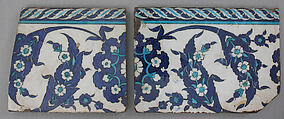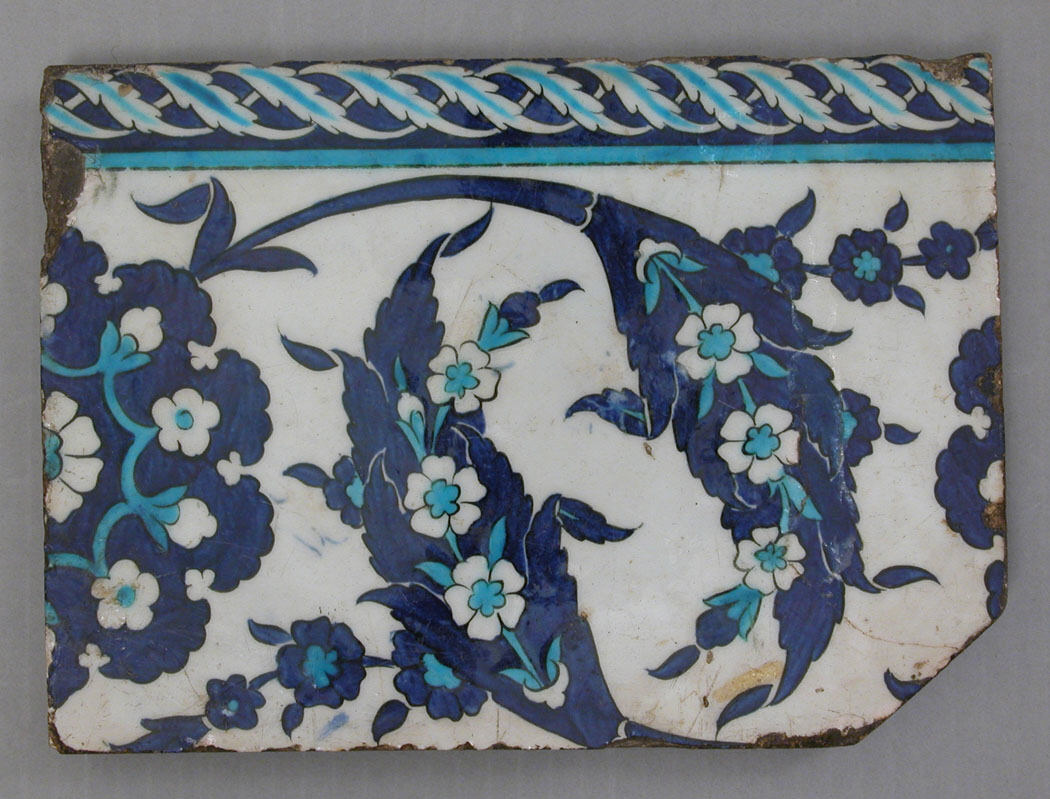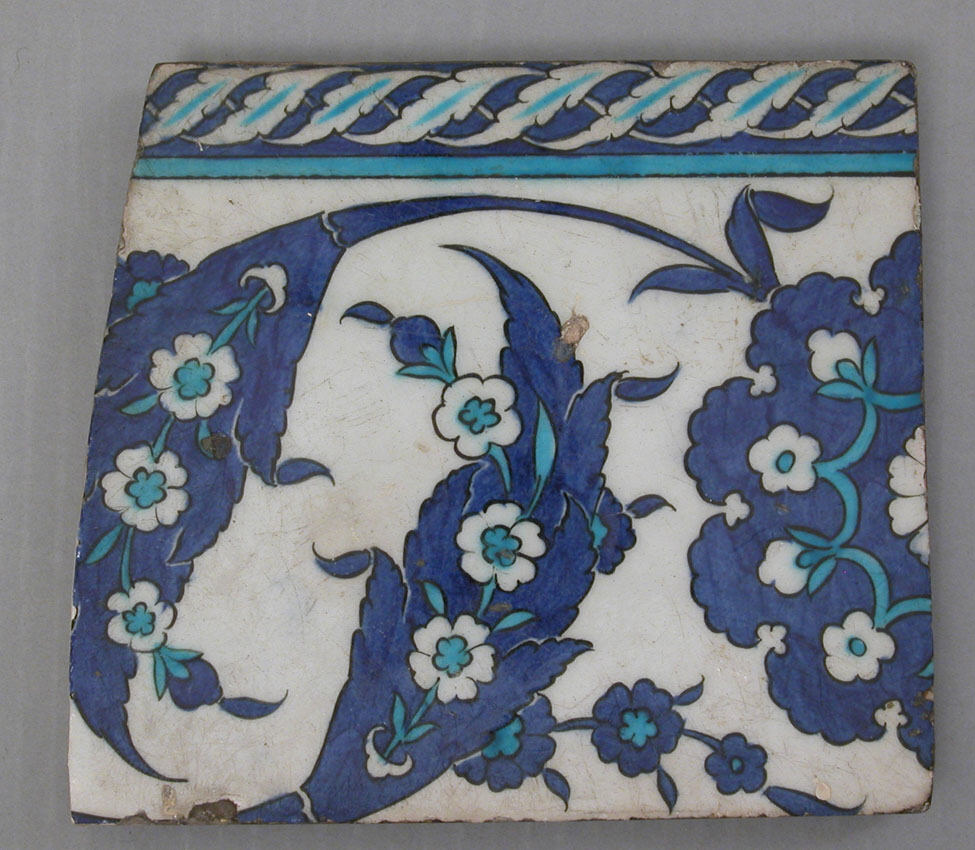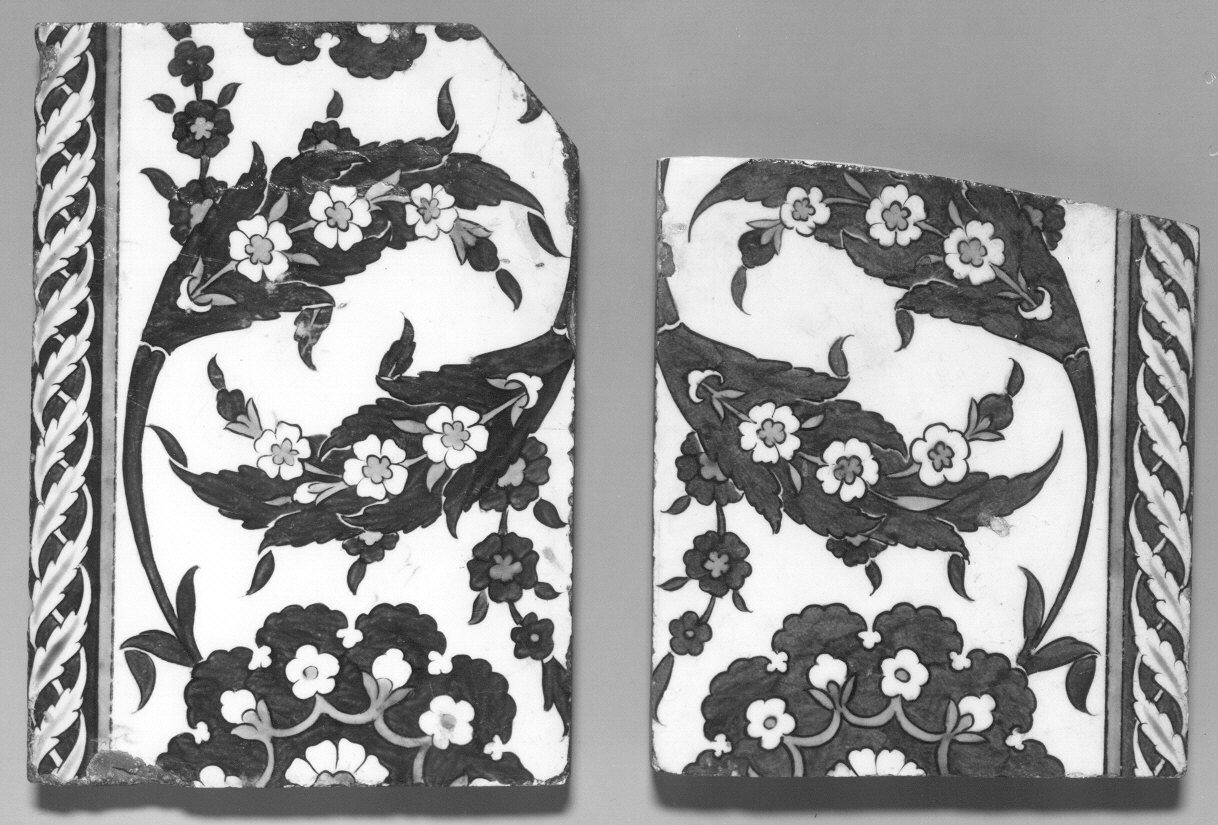Border Tiles with 'Saz' Leaf Design
These two fragmentary pieces are examples of "blue and white" Iznik tiles. The decoration presents a linear repeating pattern: a pair of feathery saz leaves grows out on the sides of a rosette-flower formed with ten multi-lobed petals. Little flowers in white and turquoise are painted over the two main motifs in dark blue. They follow the circular design of the rosette and enhance the spiral-like movement of the saz leaves.
These tiles were produced in a period when the ceramic workshops of Iznik acted as an industrial-like production center in the sixteenth century. In fact, it was under Sultan Süleyman the Magnificent (r. 1520–66) and particularly from the 1550s onwards, that the increased building activity in the Ottoman capital Istanbul, and other cities and places, demanded a massive tile fabrication in order to decorate and embellish the walls of monuments.
Due to rights restrictions, this image cannot be enlarged, viewed at full screen, or downloaded.
This artwork is meant to be viewed from right to left. Scroll left to view more.





